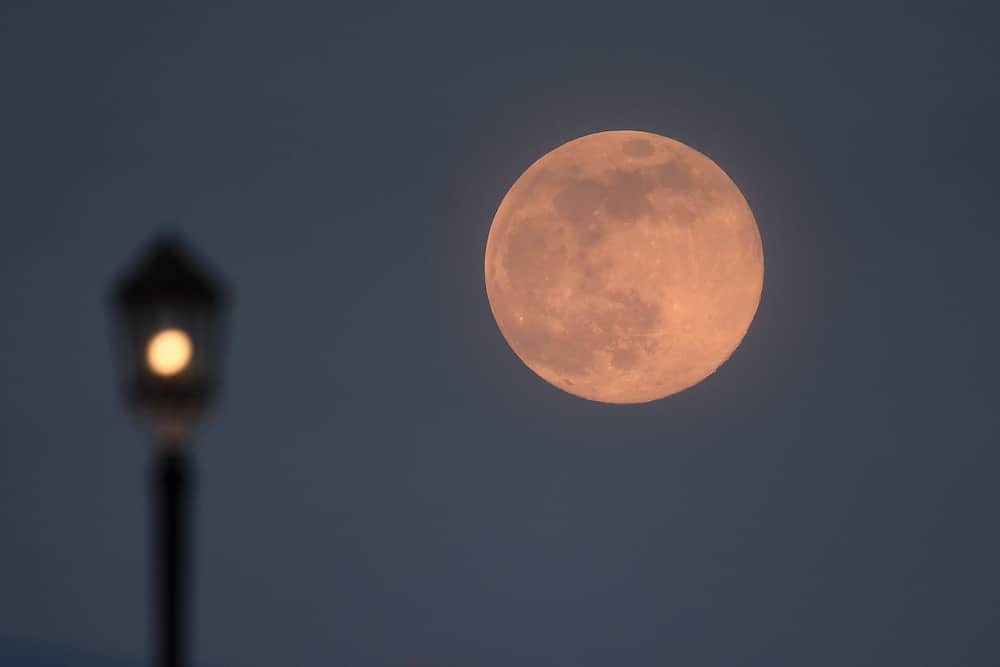The internet has been abuzz over the last week or so about the impending pink supermoon that will be visible across Australia tonight, 27 April.
ANU Astrophysicist and Cosmologist Dr Brad Tucker said the best time to see it will be at sunset, around 5.30pm, with high vantage points with clear views to the east like Canberra’s Mt Ainslie and Mt Mugga being the best spots.
“The full moon always rises around the same time as sunset, which … for Canberra is around 5.30pm. If you look towards the east, you’ll see the full moon rising around then.”
“This is the best time to see it, but the moon will be visible all night.”
The full moon always rises within about 15 minutes of the sun setting.
The reason sunset is the best time to view the supermoon is due to the moon always looking a bit bigger on the horizon, and therefore more spectacular.
“This has nothing to do with the moon, but us,” Dr Tucker said.
“We get perspective – we have trees, mountains, buildings, and other things that compare the size, and so our brain tricks us into thinking it is bigger than it is.”
For those hoping they’ll be able to post a snap of a rosy tinted moon on their Instagram tonight, sorry to disappoint, but the pink supermoon isn’t pink at all.
According to Dr Tucker the name comes from the USA, since it is spring in the Northern Hemisphere and pink flowers are blooming.
The full moon of each month has its own name, generally based around the seasons in the Northern Hemisphere, many of which are derived from Native American culture.
Some curious ones include November’s beaver moon, September’s full corn moon, March’s worm moon and January’s wolf moon.
The supermoon phenomenon itself exists due to the orbit of the moon varying by about 50,000km, meaning it is sometimes closer to Earth, and other times further away.
A supermoon occurs when the moon reaches its closest position to the Earth, known as the perigee, making the satellite appear bigger and brighter than usual.
“When it is on one of its closer approaches, and in a full phase, we call it a perigee-syzygy moon a.k.a. supermoon,” Dr Tucker said.
“So the moon will be a bit closer, and because it is closer, will look a bit bigger and brighter. It won’t look dramatically different, but it will be nice and bright!”
While tonight’s pink supermoon will be “cool”, Dr Tucker said next month’s event is one to mark in your calendar for 26 May, known colloquially as the ‘flower moon’.
“Next month, on the 26th, we will get another but that will also happen on a total lunar eclipse – when the moon turns red, and actually looks it,” he said.
“That will be a special sight!”
For more news:



